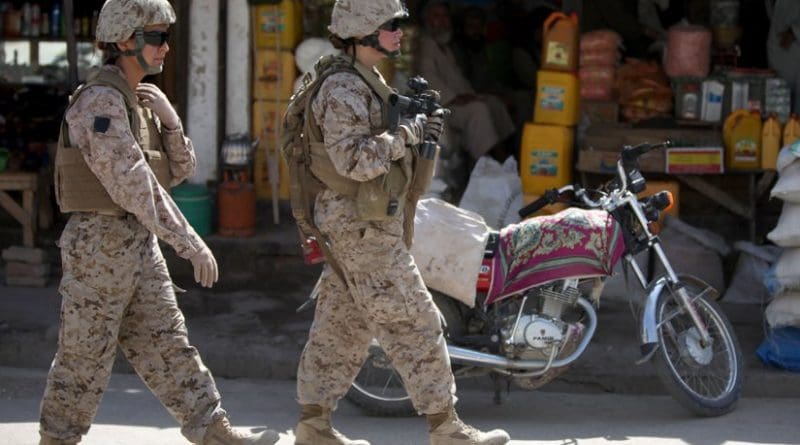Women In South Asian Military: Some Trailblazers, But Still A Long Way To Go – Analysis
By Soniya Rawat*
Women in their professional pursuits and careers encounter the ‘glass ceiling’ on account of various issues ranging pure gender bias to a an entrenched perception that certain tasks can be tenanted by them. Frontline combat duties in the military is one such domain which has kept the women out on grounds ranging from physical rigour to just being unethical ( and unchivalrous) for women to be involved in direct combat.
While the air force has allowed the entry of women pilots to the fly transports aircraft, flying fighter air-crafts in the air force, serving on submarines in the Navy , and operating combat vehicles in the army are still some of the areas which are not open to women. At a time when the US marines have just opened their doors to the first women marines, this article looks at the recent progress women have made in South Asia.
Recently Indian Air Force recruited three women as fighter pilots. Flying Cadets Avani Chaturvedi, Bhawana Kanth and Mohana Singh have broken the age-old barriers to etch their names in the history of the IAF. They will get to fly fighter jets next year after the completion of stage-III training at Bidar in Karnataka. They had flown the Pilatus and Kiran jet trainers and they will now get to train on the Hawk advanced trainer jets for a year before being allowed to fly supersonic warplanes. They were all elated and excited after the defence minister conferred on them the ‘President’s Commission’ to formally induct them into the IAF. There is no denying the fact that women have made considerable progress in almost seven decades of independence, but they still have to struggle against many handicaps and social evils in a male-dominated society.
Not only in India, in our South Asian neighbourhood too, we have examples of such women, who have become a part of their respective country’s military. Niloofar Rahmani became the first female fixed-wing military pilot in Afghanistan when she was only 21 years old. At the age of 23, she faced death threats not only from the Taliban but even her extended family who claimed that she brought shame to them. After the end of Taliban’s rule in 2001, the country aimed to increase the number of women working outside the home and Rahmani was a symbol of that efforts. Yet, even now she is being threatened by the Pakistan Taliban group, Tehrik-e-Taliban.
Despite the efforts by the US to promote gender equality, there are still severe restrictions on women’s rights as these efforts clash with traditional Afghan culture. Taliban has targeted Rahmani for not only being a woman working outside the home but also because she has specifically chosen to be in the military and according to Taliban’s interpretation of Islam, Islam has instructed “women not to work with the Americans or British” as written in one of the letters from Taliban. Rahmani has been asked to quit the Afghan Air Force, but support from the US-led coalition helped her keep her job. Her family too has been threatened and even attacked. Even after facing such problems, she continued her journey and serves her country.
Following the example of Niloofar Rahmani, we have two examples of Pakistani women who also fought for their country. One of them was from Islamabad and her name was Marium Mukhtiar. She died last year when a twin seat fighter aircraft crashed in Punjab province near Kundian (Mianwali). She was the first female pilot from Pakistan Air Force to attain the great honor of serving Pakistan’s Air Force.
Ayesha Farooq is another example who has been a role model for millions of girls. She made history by being assigned to one of Pakistan’s frontline dog fighting squadrons at the age of 26. Flight Lieutenant Farooq said that, she is ready to do all that is required by the nation. She also said that it would provide an ultimate chance to prove that women are every bit equal as men in the cockpit as she mentioned that, “When I get order, I will go and fight. I want to prove myself to show that I am something for my country”.
A country that has given to the world two astronauts (Kalpana Chawla and Sunita Williams, both Indian Americans) still needs its women to make large strides in achieving equality with men. A realisation that empowerment of any section of society does not happen by just a few top level achievers. But these trailblazers serve to remind society, especially in this part of the world, of the large empowerment gap and keep in check the regressive mindset of some sections of the society.
*Soniya Rawat is Research Intern at the Society for Policy Studies, New Delhi. She can be reached at [email protected]

